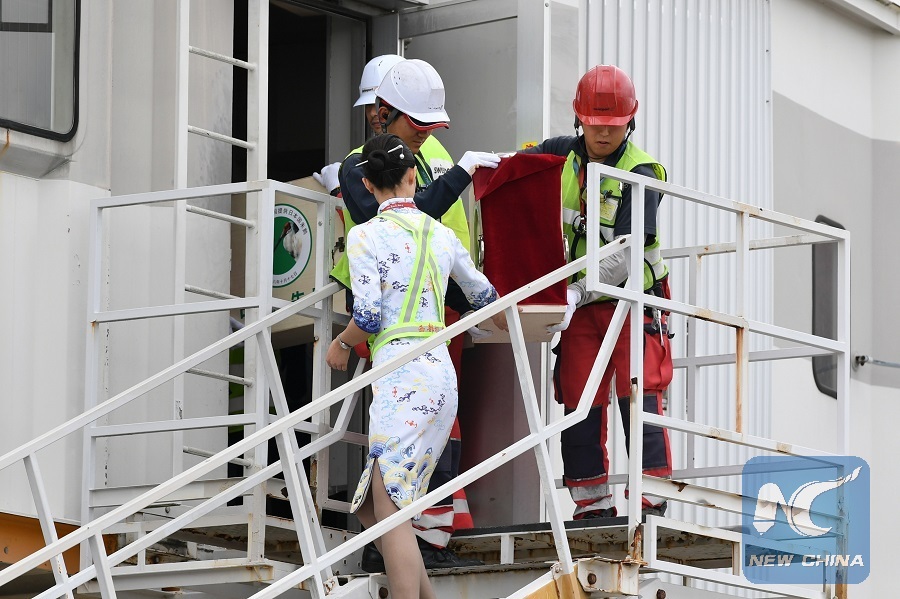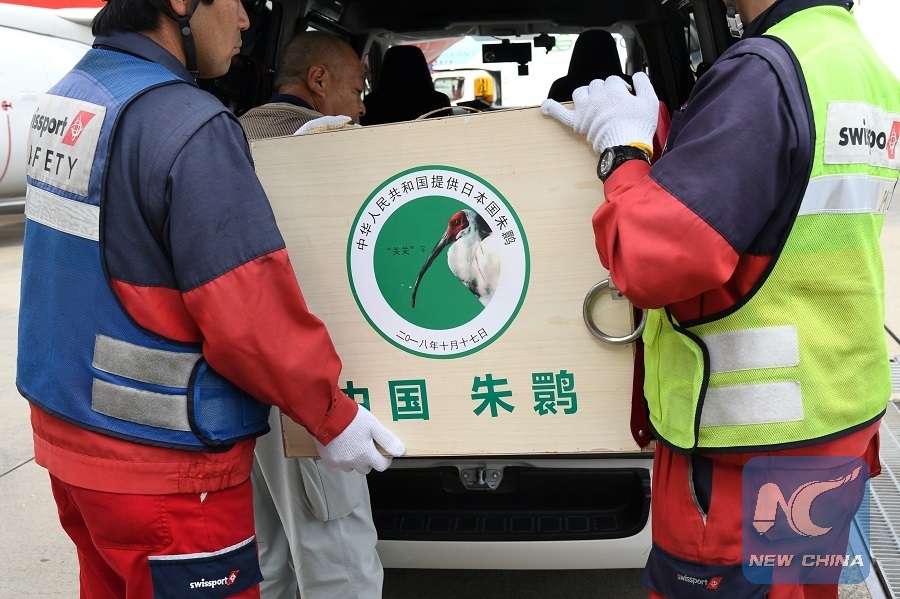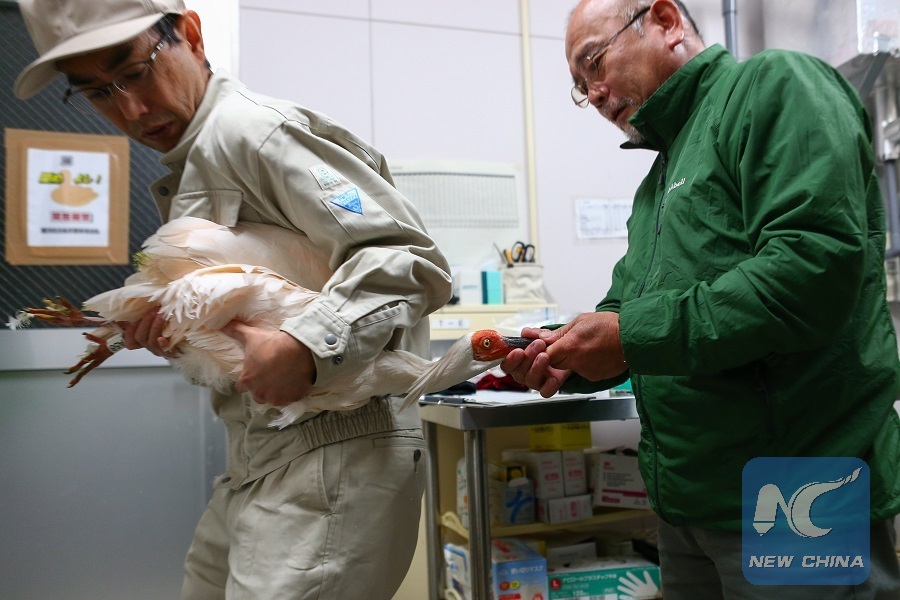
A pair of crested ibises from China arrive in Japan's Narita Airport, Oct. 17, 2018. (Xinhua/Hua Yi)
SADO, Japan, Oct. 18 (Xinhua) -- "Crested ibises have become a bridge of friendship between China and Japan, and we hope there would be more of such exchanges in the future," said Yoshinori Kaneko, a vet at the Sado Japanese Crested Ibis Conservation Center.
A pair of crested ibises from China arrived in Japan's Narita Airport Wednesday afternoon, and were transferred to the Sado Japanese Crested Ibis Conservation Center in Niigata prefecture around evening.
"Lou Lou and Guan Guan are both very healthy," said Kaneko after doing some preliminary check of the birds, adding that the center will take good care of the birds.
Shouji Hasegawa, head of the conservation center, said that the center had made a lot of preparations for welcoming the birds, including importing loaches from China to give the crested ibises a treat.
He said that the center will give the crested ibises some further checks and if they are in good condition, the center will prepare them for breeding as soon as possible.
"Introduction of the two crested ibises is significant for preserving and developing the Japanese crested ibises species by increasing genetic diversity," he said.
The two crested ibises will be moved to the Crested Ibises Forest Park after about one week.
Saburou Shinagawa, a guide at the park, said that he was full of expectations for the birds."I want to thank China for giving us the crested ibises. It will help us preserve the crested ibises species here," he said.

A pair of crested ibises from China arrive at Japan's Narita Airport, Oct. 17, 2018. (Xinhua/Hua Yi)
A crested ibis is an iconic bird deeply rooted in Japanese history and culture. However, the number of crested ibises in Japan plunged in the 20th century and the Japanese-born ibises became extinct in 2003.
Cooperation between China and Japan on protection of crested ibises started in the 1980s, and since then, China had donated five crested ibises to help rebuild the species in Japan, while Japan had been supporting the protection of the crested ibises habitat in China through governmental and non-governmental projects.
The crested ibises in Japan nowadays are all descendants of those from China. Japan now has some 370 wild crested ibises, most of which are living on the Sado Island.
The rare birds have also been providing a boost to the local economy on the island, as crested ibises have become a brand of their own for local products, especially agricultural products.
To excel in the fierce competition in the Japanese rice market, local farmers stressed that their rice is "produced in harmony with crested ibises."
To produce such rice, farmers must make the rice paddies an effective ecological system, where small creatures coexist in harmony and crested ibises have plenty of food, and the birds successfully breeding here shows that the rice here is safe, according to local officials.

A crested ibis from China receives physical examination at the Sado Japanese Crested Ibis Conservation Center in Niigata Prefecture, Japan, Oct. 17, 2018. (Xinhua/Ma Caoran)
Crested Ibis have also attracted a large number of tourists.To boost the local economy, the city of Sado planned to increase the number of foreign tourists from 1,510 in 2011 to 5,000 by 2019, and the target has already been achieved in large part due to the birds.
"The island of Sado only has a population of 55,000, but a total of some 200,000 people visit the forest park every year. Most of them came here to see the crested ibises," said an official from the tourism department of the local government.
"In Sado, having an unexpected encounter with the crested ibises is considered a sign of good luck. When you see the birds coming by your side, you will feel lucky. It's a magical experience," said Shinagawa.

